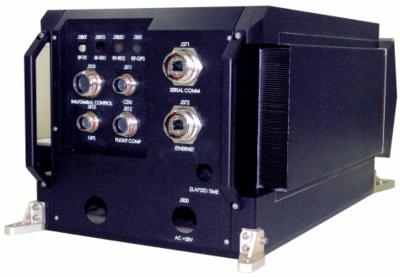Mon, Nov 20, 2017
UAVs Relayed Data From Sonobuoys Tracking Underwater Targets
The remote detection and tracking of submerged contacts, such as submarines, was demonstrated using an MQ-9 Predator B Remotely Piloted Aircraft (RPA) during a U.S. Naval exercise on October 12th. General Atomics Aeronautical Systems, Inc. (GA-ASI) participated in this successful demonstration of new maritime patrol capabilities that included anti-submarine warfare.

Sonobuoys were deployed by U.S. Navy helicopters and acoustic data gathered from the sonobuoys were used to track underwater targets. The data was transmitted to the MQ-9 and processed onboard, then relayed to the MQ-9’s Ground Control Station (GCS) several hundred miles away from the target area. The event successfully paired sonobuoy receiver, supplied by Ultra Electronics, and data processing technology, provided by General Dynamics Mission Systems-Canada, onboard the MQ-9. A track solution was calculated and transmitted from the aircraft to the Ground Control Station (GCS) via SATCOM. This technology will provide long-range patrol and relay capabilities to the MQ-9 to augment maritime mission sets.
“This test demonstrated the ability of our RPA to detect submarines and provide persistent tracking of submerged targets,” said Linden Blue, CEO, GA-ASI.
The MQ-9 was also equipped with GA-ASI’s Lynx Multi-mode Radar. The Lynx radar featured its Maritime Wide-area Search (MWAS) mode, which detects maritime surface targets over a wide area with Inverse Synthetic Aperture Radar (ISAR) for target classification. The aircraft’s Electro-optical/Infrared (EO/IR), high-definition Full-motion Video (FMV) camera supports the identification of surface vessels. These sensor contacts are correlated with the Automatic Identification System (AIS) to verify target identity. Additionally, the MQ-9 can be fitted with a centerline pod that can house a longer-range, 360-degree field of regard maritime surface search radar for enhanced surveillance over water.
The flight test was conducted over the Southern California Offshore Range (SCORE) west of San Clemente Island.
(Image provided with General Atomics news release)
More News
He Attempted To Restart The Engine Three Times. On The Third Restart Attempt, He Noticed That Flames Were Coming Out From The Right Wing Near The Fuel Cap Analysis: The pilot repor>[...]
Make Sure You NEVER Miss A New Story From Aero-News Network Do you ever feel like you never see posts from a certain person or page on Facebook or Instagram? Here’s how you c>[...]
From 2009 (YouTube Edition): Leading Air Show Performers Give Their Best Advice for Newcomers On December 6th through December 9th, the Paris Las Vegas Hotel hosted over 1,500 air >[...]
Aero Linx: NASA ASRS ASRS captures confidential reports, analyzes the resulting aviation safety data, and disseminates vital information to the aviation community. The ASRS is an i>[...]
“For our inaugural Pylon Racing Seminar in Roswell, we were thrilled to certify 60 pilots across our six closed-course pylon race classes. Not only did this year’s PRS >[...]
 NTSB Final Report: Rutan Long-EZ
NTSB Final Report: Rutan Long-EZ ANN FAQ: Turn On Post Notifications
ANN FAQ: Turn On Post Notifications Classic Aero-TV: ICAS Perspectives - Advice for New Air Show Performers
Classic Aero-TV: ICAS Perspectives - Advice for New Air Show Performers ANN's Daily Aero-Linx (06.28.25)
ANN's Daily Aero-Linx (06.28.25) Aero-News: Quote of the Day (06.28.25)
Aero-News: Quote of the Day (06.28.25)



